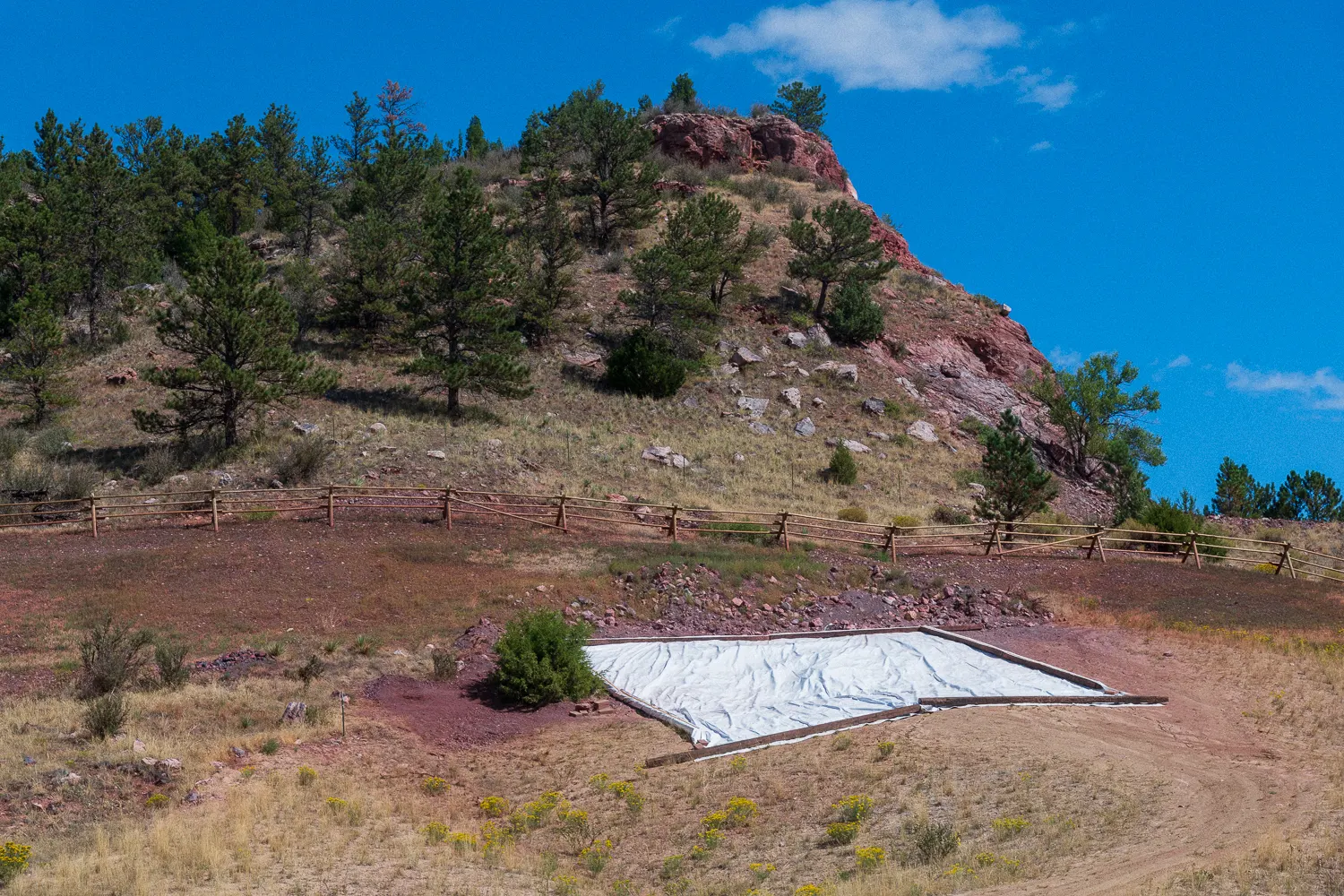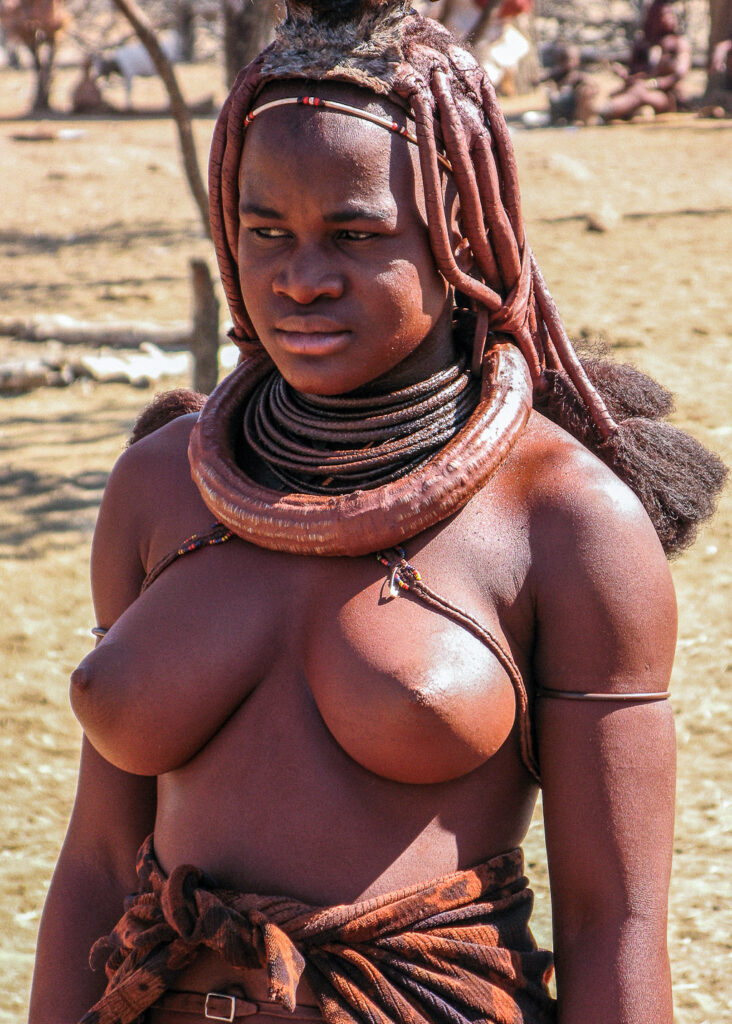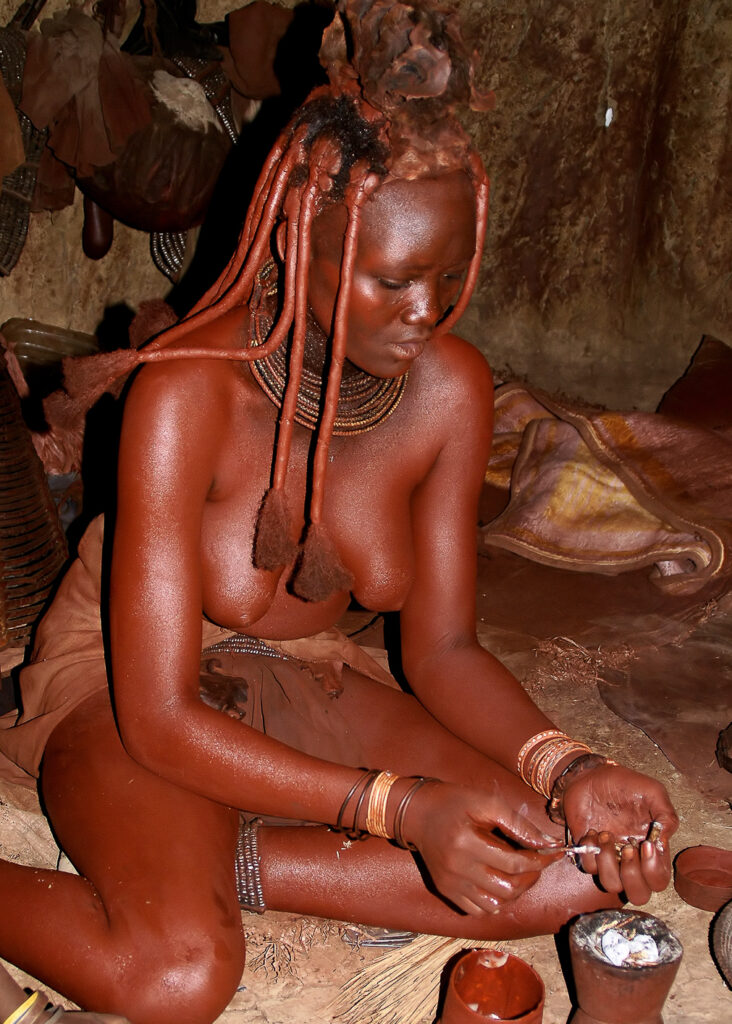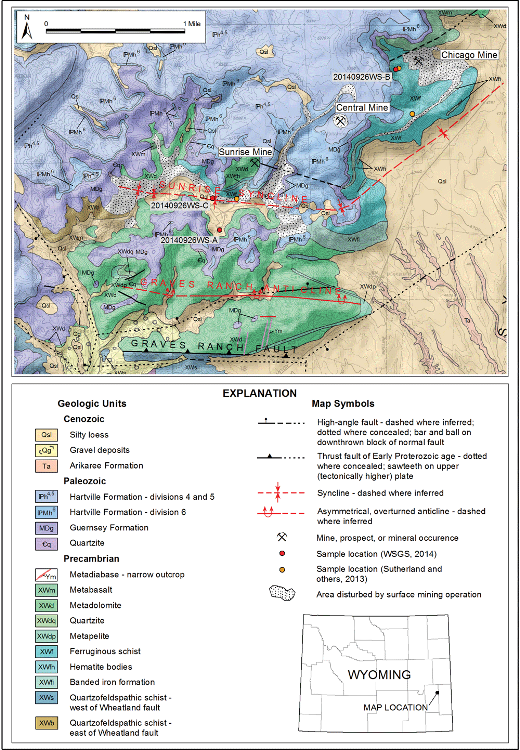| WYOMING |
Archaeologists have assumed that the first Americans were the Clovis peoples who reached North America some 13,000 years ago from northern Asia based on lithics found in North America over the past century. But, that hypothesis changed when new archaeological finds established that humans reached the Americas thousands of years before.
These discoveries, along with identifications in genetics and geology, have forced a reconsideration of where these pioneers came from and when they arrived.
Over the past ten years, the Clovis First model has come under debated attack as a result of discoveries found from southern Texas to the Pacific Northwest. We can add Sunrise, Wyoming to that list due to serendipity, hard science, and back-breaking work where the oldest Paleo-Indian ochre mine in North America is contributing new evidence of when early man arrived in North America.
Nearly 13,000 years before the Colorado Fuel and Iron Company came to the high desert foothills of eastern Wyoming, establishing the town of Sunrise and eventually removing over 40 million tons of iron ore before calling it quits in 1980, the first inhabitants of present-day WyoBraska were using antlers and animal bones to remove valuable red ocher from the steep walls of Eureka Canyon.
In nearly every civilization on every continent, from the 75,000-year-old Blombas Cave in South Africa to the modern-day artist’s studio, ocher has been utilized for body paint, sunscreen, antiseptic for wounds, insect repellent, funerary and religious practices, the preservation of animal hides, and the painting of cave walls and the creation of other artworks. Ocher is a family of earth pigments that includes sienna, umber, purple ochre, yellow ocher, brown ocher, and the focus of our story, red ocher, which is also known as the mineral Hematite.
To the Paleo-Indians of the Great Plains and the Rocky Mountains, red ocher was a vital part of everyday life. The only known prehistoric quarry of this valuable mineral identified north of Mesoamerica is located in southeastern Wyoming, about 45 miles from the west Nebraska state line ( WyoBraska ). The Powars II Archeology site (aka Powars II) was named for its discoverer and savior, Wayne Powars, and is one of only five such quarries found in the Americas and the only Paleo-Indian mine found in North America. Archeologists wouldn’t know anything about this unique location had it not been for a series of fortunate events, the understanding and vision of a land owner, and the dedication of men and women who remained diligent in unearthing its secrets.
| HISTORY OF THE SUNRISE MINE

In the 1880s, the area around what would become the towns of Sunrise and Hartville, Wyoming, was essential in mining copper. In 1890, Charles A. Guernsey, named after the nearby town of Guernsey, WY, founded the Wyoming Railway and Iron Company to exploit iron mining in the area. In 1898, the Colorado Fuel and Iron Company (CF&I) began leasing mining rights in the area to improve its supply of iron. In 1904 CF&I bought the entire Sunrise Mine.
The Colorado Fuel and Iron Company was a large steel conglomerate founded by merging previous business interests in 1892. By 1903 it was mainly owned and controlled by John D. Rockefeller and Jay Gould’s financial heirs. While it came to control many plants throughout the country, its main plant was a steel mill on the south side of Pueblo, Colorado, and it was the city’s primary industry for most of its history.
Colorado Fuel and Iron aspired to make Sunrise a model company town. In the early 1900s, company-owned houses, boarding houses, depots, a school, churches, shops, and other structures were built.
In response to the public outcry from the Ludlow Massacre of 1914, in which soldiers from the Colorado National Guard and private guards employed by CF&I attacked a tent colony of 1200 striking coal miners and their families, killing 21 people, including children, John D. Rockefeller made further improvements to the town in the form of better brick housing, the first YMCA building in the state of Wyoming, parks, a playground, better utility systems, and a hospital, along with other improvements.
The initial mining method used at Sunrise was strip mining, followed by glory hole mining (see video below), which is a method in which either a deep mine shaft or an open pit mine is created, or a block caving method is used to extract the ore. The Glory Hole at the Sunrise Mine, ½ mile wide and now filled with 500 feet of water, is an example of glory hole mining.
By World War II all of the mining for iron was underground. The mined ore was partially processed on-site in the Shaft-House building and then sent to Colorado Fuel and Iron mills in Pueblo, CO, to be refined.
Because of decreasing ore quality and problems in the domestic steel market, the town and mine were closed by Colorado Fuel and Iron in 1980, and the property was abandoned. In 2011, the site was purchased by John Voight from Fred Ells, who, in his words, “bought a mine that came with a town.” Voight has been instrumental in preserving the remaining structures on the property and in ensuring that archeologists have full access to the dig site.
| THE DISCOVERY OF POWARS II
In 1986, Wayne Powars (pronounced “powers”) made a fateful trip back to Sunrise, Wyoming, for a school reunion. Powars, who had happened upon the quarry as a schoolteacher in Sunrise in 1939 and 1940, discovered that the site was about to be razed and reclaimed by the Department of Environmental Quality as part of their Abandoned Mine Land Program. The DEQ was completely unaware of the mine until Powars reported his findings to George Frison.
Frison, who passed away in 2020, was Wyoming’s first State Archaeologist and the only Wyoming resident ever to be inducted into the illustrious National Academy of Science. Dr. George Frison (Wyoming State Archaeologist), Dr. George Ziemens, and Dennis Stanford, Director of the Paleo-Indian/Paleoecology Program at the National Museum of Natural History at the Smithsonian Institution, immediately acted to ensure the preservation of the site.
Due to the efforts of Mr. Powars, who threatened to block the bulldozers with his own body to protect the site, they achieved their goal 24 hours before the demolition was scheduled to occur, and the oldest known mining operation in both north and South America was lost forever under the blade of a D8 bulldozer.
This group of Archeologists immediately began studying the quarry, and discoveries are being made up to this day, including over 30 chipped stone tools per square meter in some places, the oldest canid remains from an American archaeological site, and shell beads.
It is believed that the Powars II quarry was used for about 3000 years before being abandoned for a site at Sunrise’s nearby sister mine, the Chicago Mine. The floor of the Chicago Mine, by many accounts, was littered with stone tools and an estimated 250 tons of red ocher when it was first opened. Unfortunately, the entire site was destroyed by CF&I mining operations, and the priceless artifacts were lost to industrial bureaucracy and interest.
| THE IMPORTANCE OF RED OCHRE AND THE POWERS II SITE
The discovery of a possible pre-Clovis civilization red ochre mine in WyoBraska suggests that these peoples were using the mineral in the same manner, perhaps the for the same purposes, as the Himba People in Namibia, or their cousins, the Herero, as well as other tribal peoples and cultures throughout history.
Modern illustrators have failed to reproduce depictions of the pre-Clovis and Clovis peoples who would have very probably adorned themselves in red ochre, much like the women of the Himba tribe and other ancient tribes, in Africa and South America- the closest cultural examples of prehistoric man that modern man has to an accurate depiction of our ancestors.
Himba women adorn themselves in otjize, a mixture of animal fat, ash, and ground red ochre. Anthropologists have speculated about the origins of this practice, with some claiming it is to protect their skin from the sun or repel insects. The Himba say it is an aesthetic consideration, a sort of traditional make-up they apply every morning when they wake. Men do not apply otjize. As pastoralists, cattle are central to the lives of the Himba – just like their relatives, the Herero, who are renowned for the headwear of their women, which resemble cattle horns. The Himba are not the only culture still using red ochre in this manner. Photo by WyoBraska Expeditions Photographer © Alun Williams
When Dr. Frison, Dr. Ziemens, and their team of archeologists gained access to the Powars II site they used a backhoe to dig into the soil 12 feet and were stunned to learn that the team continued to find lithics dating to 7000 years ago. Dr. Ziemens believes many more layers of artifacts are buried even deeper under the surface.
Radiocarbon dating indicates that the quarry was used in two periods. The first occupations of the site 12,840 years ago, called the Clovis and Plainview occupations, lasted several hundred years.
Until recently, the Clovis people were believed to be the first inhabitants of North America and quarried the red ocher with bones and antlers. They also produced and repaired weapons at the site. Second, the Hell Gap occupation was over a century later. This is when artifacts were dumped into the quarry pit in what appears to be a religious act as the projectile points had been purposely covered with red ocher.
Clovis projectile points found at Sunrise have possibly come from as far away as the Edwards Plateau of Texas, which stretches from the Hill Country, near San Antonio and Austin, to the deserts of West Texas. But, according to George Ziemens, most of the lithics discovered at the Powars II site were manufactured there through the repeated occupation of the area.
After repeated attempts to discover campsites or signs of long-term habitation on the valley floor near the ocher mine, no evidence of human occupation has been found. This is most likely due to CF&I using heavy equipment to fill and level low spots to create the town of Sunrise. This process drastically affected the site as the blades of bulldozers pushed one layer of strata on top of older layers, destroying the archive of the matrix and displacing the lithics found in them.
Archeologists have also discovered a unique and previously unknown chert named “Voight Chert” in honor of the current landowner who opened the dig site to the investigation. Paleo-Indians used Voight chert to fashion Clovis lithics for hunting mammoths, camels, and horses that once roamed across much of North America. This chert, however, was unlike anything the geologists and archeologists had seen before.
The chert from the Hartville Uplift, and the nearby Spanish Diggings, are famous for lithics infused with limestone. On the other hand, Voight Chert is fused with iron. It has a blue-gray appearance due to the processes that created it, dating it, according to geologists, to the Pre-Cambrian (4,600 million years ago – 541 (+/- 1) million years) era.
Michael R. Waters from The Center for the Study of the First Americans at Texas A&M University discovered a dirt-smeared fragment of blue-gray stone, very much like Voight Chert at the Powers II site, which was used as an all-purpose cutting tool and eventually discarded by its owner long ago on a grassy Texas creek bank. The discovery is one among thousands of artifacts found in South Texas. The resemblance of the blue-gray stone, if Pre-Cambrian, speaks volumes to the connectivity between peoples 15,800 years ago if the chert flake turns out to be Voight Chert.
Dr. George Ziemens states that 90% of the artifacts found in the Powars II ocher mine are made from this material, making the discovery a significant find, and suggesting that most of the lithics discovered there were manufactured on-site.
If true, the discovery has potentially enhanced the findings of other archeology sites in North and South America, adding more evidence that the Clovis civilization was not the first people in North America and they didn’t necessarily use the Bering land bridge as a route south into North America 15,000 years ago as these lithics appear to be pre-Colvis.
The points unearthed are, without a doubt, Clovis in shape and form- created from Voight Chert which, so far, has only been discovered in one location in North America, which is at the Powars II site and the Sunrise mine. The projectile points found at the Powars II site, despite having the appearance of Clovis projectile points, have been named Sunrise Points until further dating techniques can be applied to learn their origin and age. Interestingly, the edges and fluting of the Sunrise Points exhibit tool marks and techniques of what could either be a developing design concept, rather than a generational progression of development and use, or simply Clovis points that have been used repeatedly and discarded religiously at the ocher mine, carefully placed, and covered, in red ochre.
Scientists long believed that the Clovis people were the first to arrive in North America but the discoveries at Powars II, and other locations in North America are re-writing this hypothesis, forcing scientists to rethink and revisit long-standing ideas about these trailblazers.
| CREDITS & RESEARCH
More information:
Scientific America – The First Americans
By: Hawk Buckman
Photography by: Alun Williams & Hawk Buckman










